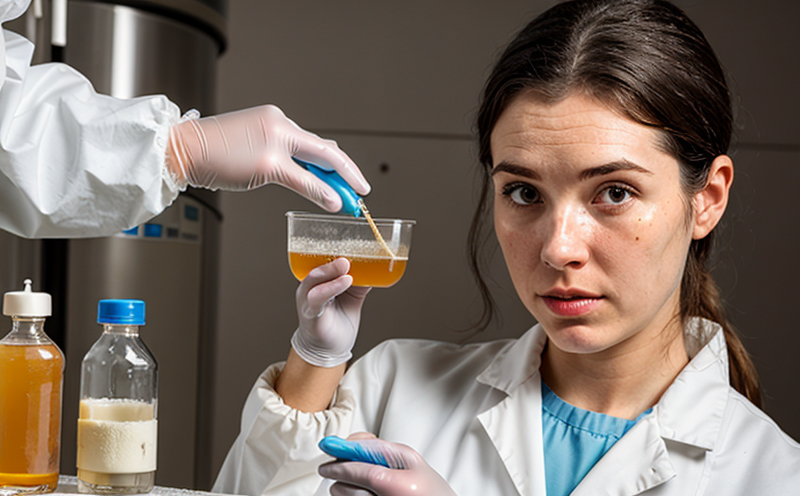ASTM E2694 ATP Bioluminescence Testing for Yeasts and Fungi
The ASTM E2694 standard provides a rapid method for determining adenosine triphosphate (ATP) levels in biological materials using bioluminescence technology. This test is particularly useful for identifying the presence of yeasts and fungi, which are critical in quality assurance programs across various sectors including food safety, healthcare, and pharmaceuticals.
In this service, we utilize ATP bioluminescence testing to assess the cleanliness and hygiene of surfaces or materials suspected of containing biological contaminants. The test works by measuring the amount of ATP present on a given surface, which is indicative of microbial activity. Yeasts and fungi produce ATP during their metabolic processes, making them detectable through this method.
The ASTM E2694 protocol involves several key steps:
- Sampling: Collecting swabs or extracts from the test area
- Lysis: Breaking down the biological material to release ATP
- Enzymatic Reaction: Catalyzing the luminescence reaction using firefly luciferase
- Measurement: Recording bioluminescent light output, which is directly proportional to the amount of ATP present.
The test results provide a quantitative measure of microbial activity, allowing for precise assessment and comparison against acceptable levels. This method is highly sensitive and can detect even low levels of contamination, making it an invaluable tool in maintaining high standards of hygiene and quality control.
| Applied Standards | Description |
|---|---|
| ASTM E2694-18 | Rapid method for determining adenosine triphosphate (ATP) levels in biological materials. |
The ASTM E2694 standard ensures that the testing process is consistent and reproducible, thereby enhancing reliability. This service aligns with broader quality management practices by offering a robust and efficient means of monitoring and controlling microbial contamination.
Applied Standards
| Applied Standards | Description |
|---|---|
| ASTM E2694-18 | Rapid method for determining adenosine triphosphate (ATP) levels in biological materials. |
The ASTM E2694 standard is widely recognized and adopted by regulatory bodies, laboratories, and quality assurance teams. It provides a standardized approach to ATP bioluminescence testing that ensures accurate results across different environments and applications.
The use of this standard in our service guarantees compliance with industry best practices and supports the development of reliable data for decision-making processes. By adhering to ASTM E2694, we ensure consistency and accuracy in detecting microbial activity, thereby enhancing overall quality control measures.
Benefits
- Rapid Results: Provides quick turnaround times for testing results.
- Sensitivity: Detects even low levels of contamination, ensuring high standards of hygiene.
- Consistency: Ensures reproducible and reliable results across different testing environments.
- Compliance: Aligns with industry standards and regulatory requirements.
The ATP bioluminescence test is a powerful tool for maintaining cleanliness and hygiene in various sectors, including food safety, healthcare, pharmaceuticals, and manufacturing. By employing this technology, we can help ensure that products meet the highest quality standards and comply with relevant regulations.
Our service not only provides rapid results but also ensures consistent accuracy across different testing environments. This consistency is crucial for maintaining high standards of hygiene and ensuring compliance with industry standards and regulatory requirements. By leveraging ASTM E2694, we can offer reliable data that supports informed decision-making processes in quality management.
Environmental and Sustainability Contributions
The use of ASTM E2694 ATP bioluminescence testing for yeasts and fungi contributes significantly to environmental sustainability by enabling efficient monitoring and control of microbial contamination. This method helps reduce the need for extensive chemical treatments, thereby minimizing waste and environmental impact.
By ensuring that surfaces and materials remain free from excessive microbial growth, we help prevent potential health risks associated with contaminated products. This not only improves product quality but also supports sustainable practices by reducing resource consumption and promoting safer environments.
In addition to its role in maintaining high standards of hygiene, this testing method can play a crucial part in reducing the use of harsh chemicals that are often employed for cleaning purposes. By detecting low levels of contamination early on, we can implement targeted interventions, which reduces the overall amount of chemical usage and promotes a more sustainable approach to cleanliness.





